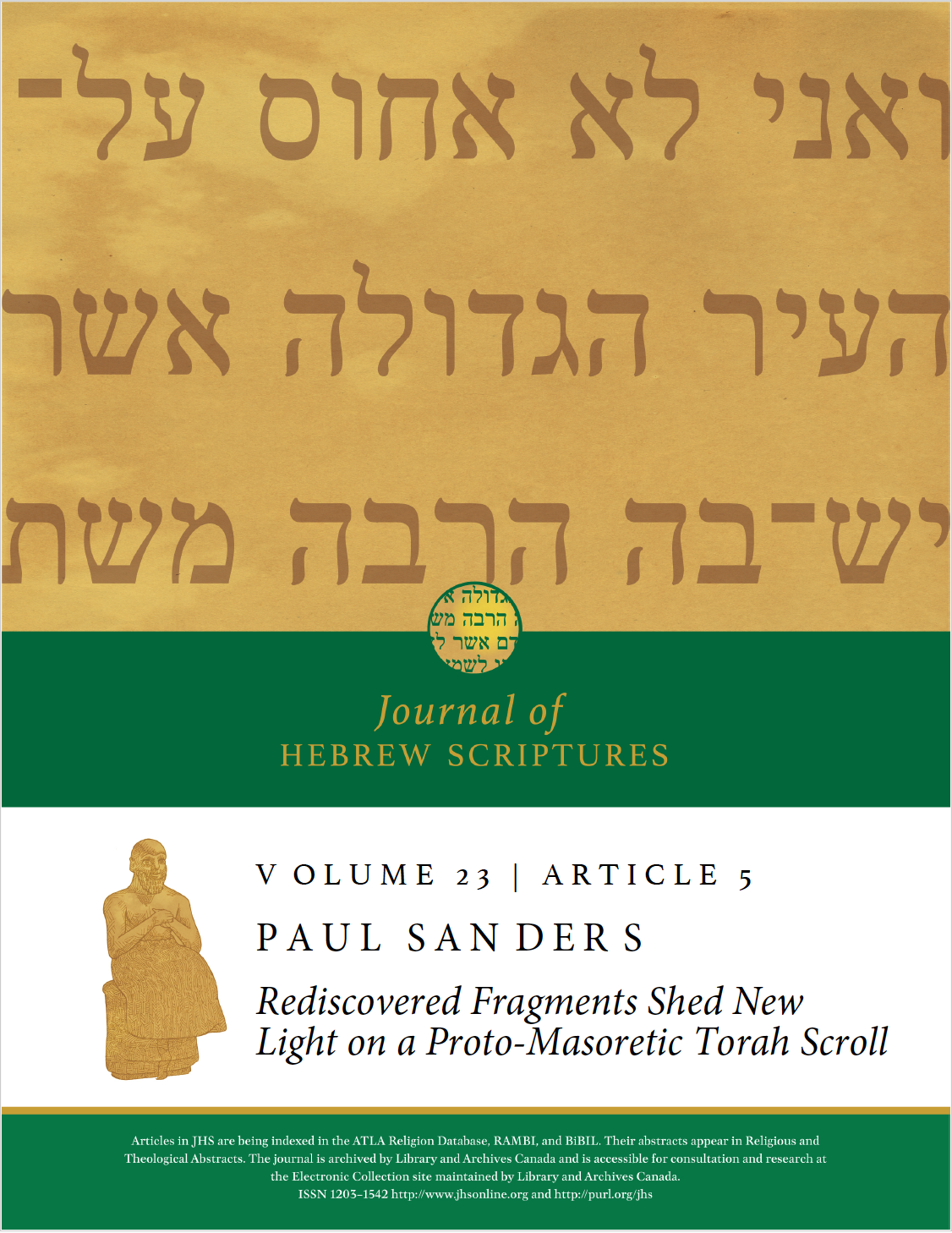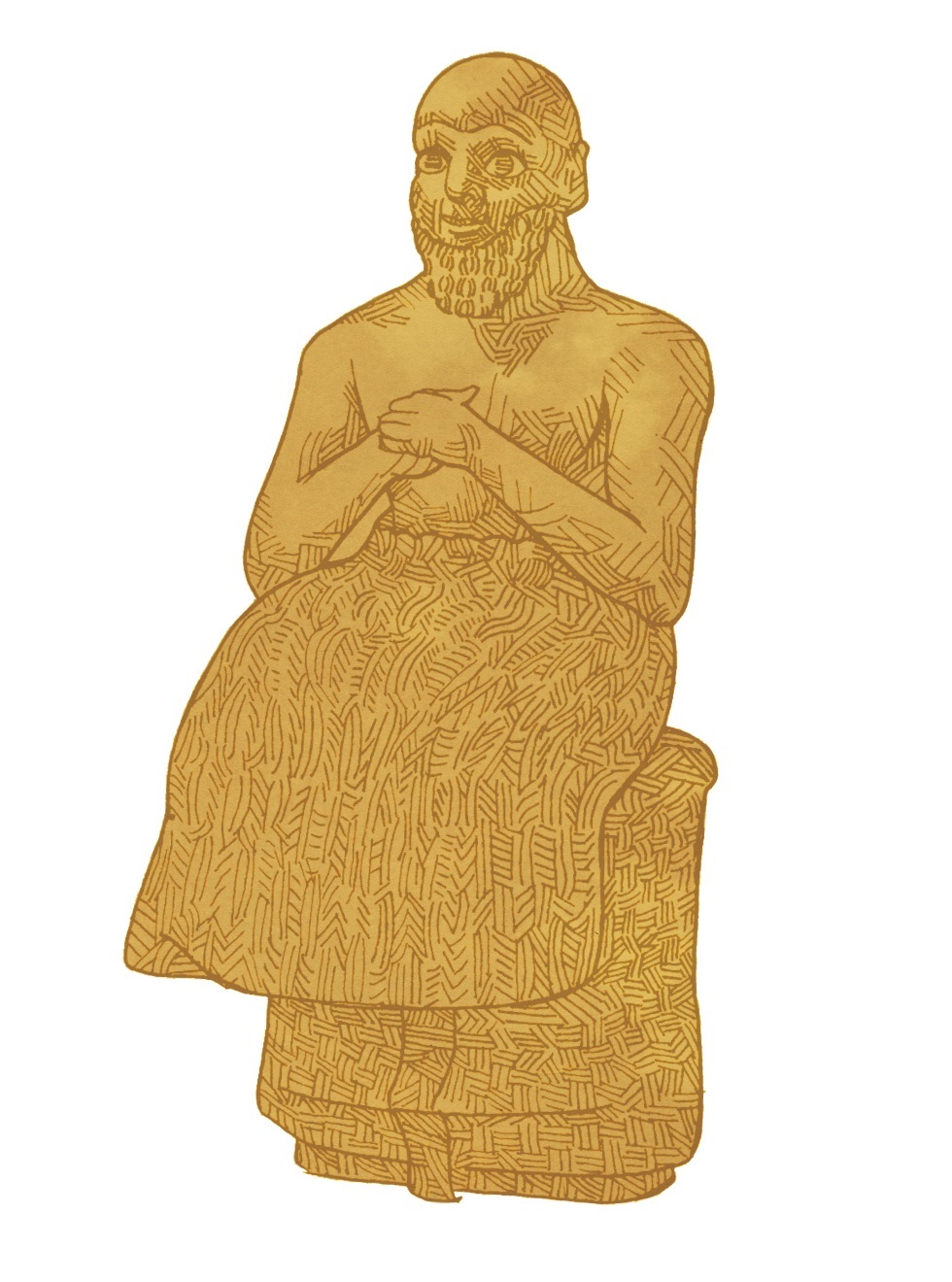Rediscovered Fragments Shed New Light on a Proto-Masoretic Torah Scroll
DOI:
https://doi.org/10.5508/jhs29630Abstract
After Edna Engel and Mordechay Mishor had discovered that two fragments with excerpts from the book of Exodus belonged to a single Torah scroll dating from the seventh or eighth century CE, Mordechai Veintrob identified thirteen additional fragments of the same scroll, most of them coming from the Cairo Genizah. This article shows that in the preserved fragments no orthographic differences occur with the (partially reconstructed) text of the more recent Aleppo Codex, while there are such orthographic differences with the other ancient Bible codices. The relationship between the ancient scroll and the Aleppo Codex is looser as far as the sectional division by means of petuḥot and setumot is concerned. However, the tradition according to which five specific lines must be written above the text of the Song of the Sea (Exod 15:1–19) seems to have this very scroll as its source. This tradition was followed in the Aleppo Codex and other ancient codices.
References
Dominique Barthélemy, Studies in the Text of the Old Testament: An Introduction to the Hebrew Old Testament Text Project, TCT 2 (Winona Lake: Eisenbrauns, 2012).
Salomon Asher Birnbaum, “A Sheet of an Eighth Century Synagogue Scroll,” VT 9 (1959), 122–29.
James H. Charlesworth, “Ashkar Manuscript 2: Introducing a Phenomenal New Witness to the Bible,” Israel Museum Studies in Archaeology 7 (2015), 66–69.
Graham I. Davies, A Critical and Exegetical Commentary on Exodus 1–18, ICC, Vol. 1: Exodus 1–10 (London: T&T Clark, 2020).
Edna Engel and Mordechay Mishor, “An Ancient Scroll of the Book of Exodus: The Reunion of Two Separate Fragments,” Israel Museum Studies in Archaeology 7 (2015), 24–61.
Ronald Hendel, Steps to a New Edition of the Hebrew Bible, TCSt 10 (Atlanta: SBL, 2016).
Richard S. Hess, The Old Testament: A Historical, Theological, and Critical Introduction (Grand Rapids, MI: Baker Academic, 2016).
Armin Lange and Emanuel Tov (eds), Textual History of the Bible: The Hebrew Bible, Vol. 1A: Overview Articles (Leiden: Brill, 2016), 121–22; Vol. 1B: Pentateuch, Former and Latter Prophets (Leiden: Brill, 2017).
Josef M. Oesch, “Skizze einer formalen Gliederungshermeneutik der Sifre Tora,” in Marjo C.A. Korpel and Josef M. Oesch (eds.), Unit Delimitation in Biblical Hebrew and Northwest Semitic Literature, Pericope 4 (Assen: Van Gorcum, 2003), 162–203.
Yosef Ofer, “A Fragment of the Aleppo Codex (Exodus 8) that Reached Israel,” Textus 26 (2016), 173–98.
Yosef Ofer, The Masora on Scripture and Its Methods, FSBP 7 (Berlin: De Gruyter, 2019).
Jordan S. Penkower, “Maimonides and the Aleppo Codex,” Textus 9 (1981), 39–128.
Jordan S. Penkower, חדשה עדות – :ארם־צובה בכתר התורה נוסח – New Evidence for the Pentateuch Text in the Aleppo Codex (Ramat Gan: Bar-Ilan University, 1992).
Jordan S. Penkower, “A Sheet of Parchment from a 10th of 11th Century Torah Scroll: Determining its Type among Four Traditions (Oriental, Sefardi, Ashkenazi, Yemenite),” Textus 21 (2002), 235–64.
Jordan S. Penkower, “An Eleventh-Century Eastern Masoretic Codex of the Pentateuch,” Textus 30 (2021), 152–70.
Paul Sanders, “The Ashkar-Gilson Manuscript: Remnant of a Proto-Masoretic Model Scroll of the Torah,” JHS 14 (2014), article 7, 1–25.
Emanuel Tov, Textual Criticism of the Hebrew Bible (4th ed.; Minneapolis: Fortress Press, 2022).
Mordechai Veintrob, “More Fragments of Early Torah Scroll Come to Light,” Genizah Fragments 77 (April 2019), 1–2.

Downloads
Published
How to Cite
Issue
Section
License
Copyright (c) 2024 Paul Sanders

This work is licensed under a Creative Commons Attribution 4.0 International License.

 Statue of Ebih-Il, drawing by Simeon Goa, © Journal of Hebrew Scriptures
Statue of Ebih-Il, drawing by Simeon Goa, © Journal of Hebrew Scriptures
